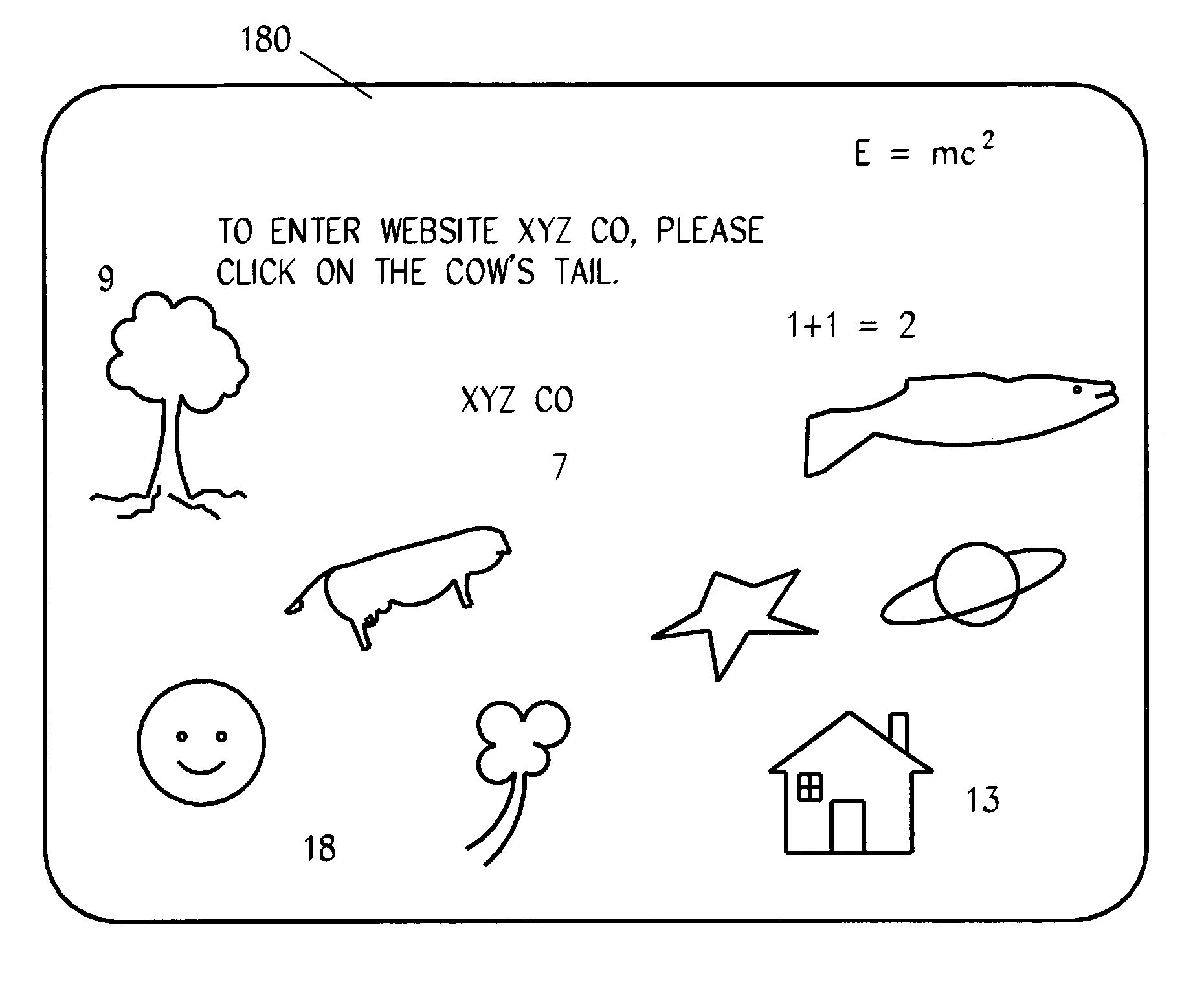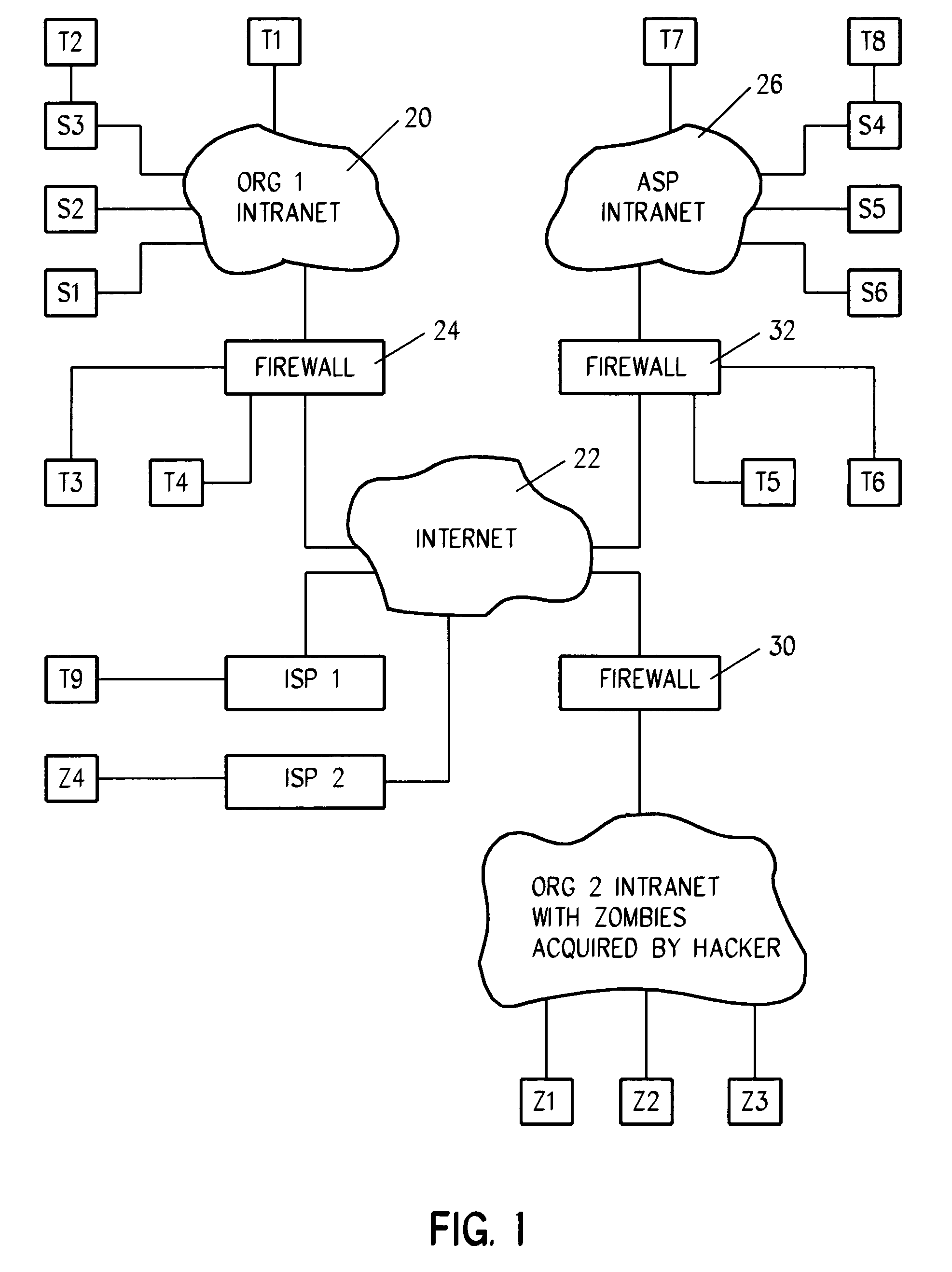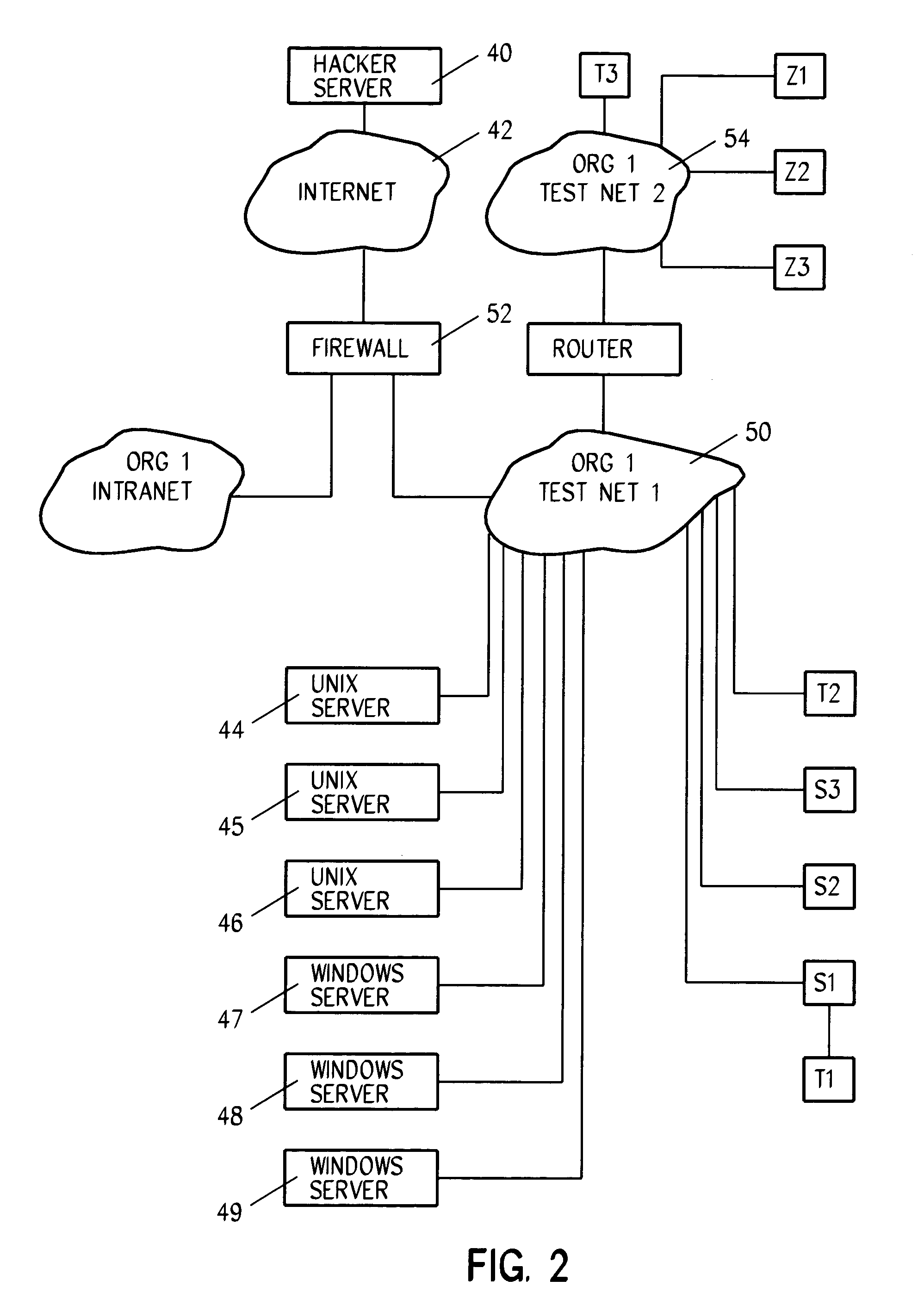System and method for the detection of and reaction to denial of service attacks
a technology of denial of service and detection method, applied in the field of monitoring and analyzing a communications network, can solve the problems of increasing system security concerns in lock step, unable to remote system access, and unable to access data processing applications
- Summary
- Abstract
- Description
- Claims
- Application Information
AI Technical Summary
Problems solved by technology
Method used
Image
Examples
Embodiment Construction
[0034]In pending patent applications Silverman 1 and Silverman 2, methods are provided for determining the discrete speed and utilization of a network and the streaming speed and utilization of a network. Discrete (i.e., individual) packets and streams of packets travel at different speeds across any given multihop connection. The stream has a rate approaching the bottleneck facility speed in the connection, while discrete packets travel at a slower speed. End-to-end discrete utilization increases incrementally for each hop with competing traffic in the connection, whereas streaming utilization has effect only on that hop having the lowest available throughput.
[0035]By means of the system and method described in the predecessor patent applications, the end-to-end discrete and streaming speeds and utilizations of the network can be computed for any connection.
[0036]One level of DDOS detection consists of using the system and methods described to detect spikes in streaming and discret...
PUM
 Login to View More
Login to View More Abstract
Description
Claims
Application Information
 Login to View More
Login to View More - R&D
- Intellectual Property
- Life Sciences
- Materials
- Tech Scout
- Unparalleled Data Quality
- Higher Quality Content
- 60% Fewer Hallucinations
Browse by: Latest US Patents, China's latest patents, Technical Efficacy Thesaurus, Application Domain, Technology Topic, Popular Technical Reports.
© 2025 PatSnap. All rights reserved.Legal|Privacy policy|Modern Slavery Act Transparency Statement|Sitemap|About US| Contact US: help@patsnap.com



